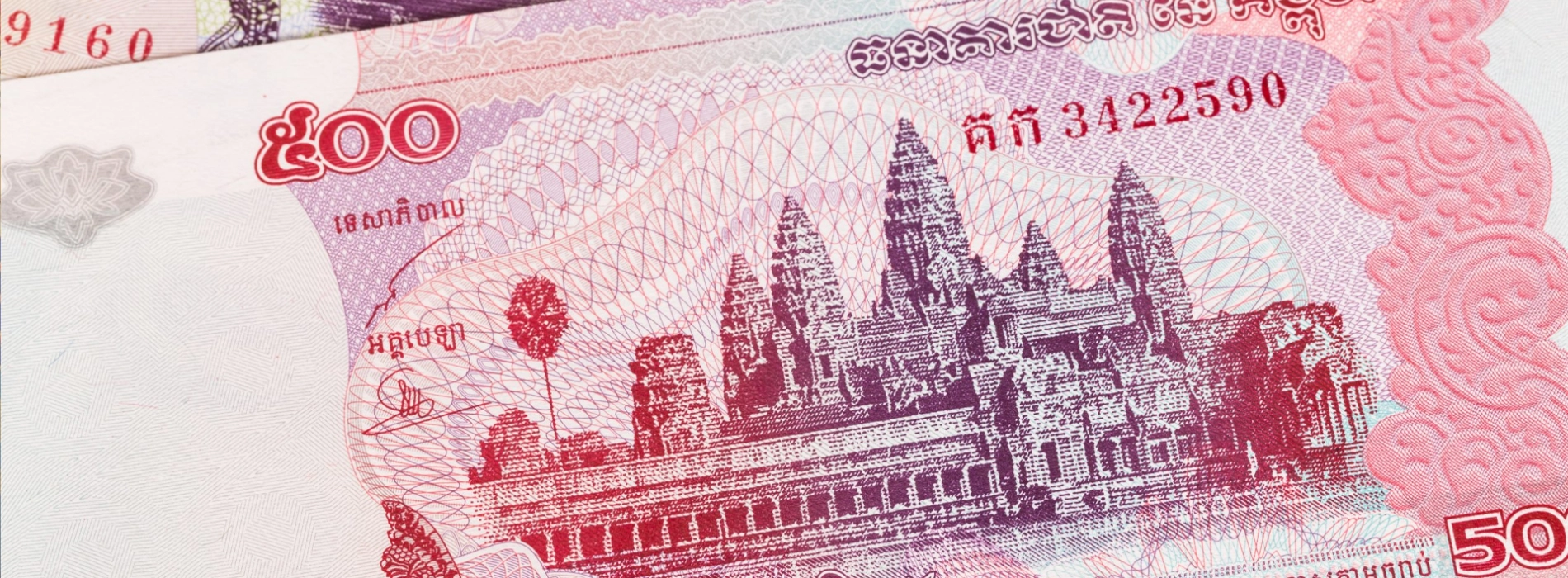
One of the most important aspects of traveling is money, which is the most crucial aspect of your trip. It's a good idea to familiarize yourself with the fundamentals of Cambodian currency before visiting the country. Allow Asia King Travel to assist you in learning about the Cambodian riel, this country's currency.
The Cambodian Riel (KHR) is the official currency of Cambodia. Its currency symbol and it is issued by the National Bank of Cambodia. The Cambodian rial is predominantly used for virtually all day-to-day transactions, whether large or small, throughout the country. There are banknotes of 1000, 2000, 5000, 10000, 20000, 50000 & 100000 Riel. The zeros may get you confused, so make sure you check the bill carefully before purchasing.
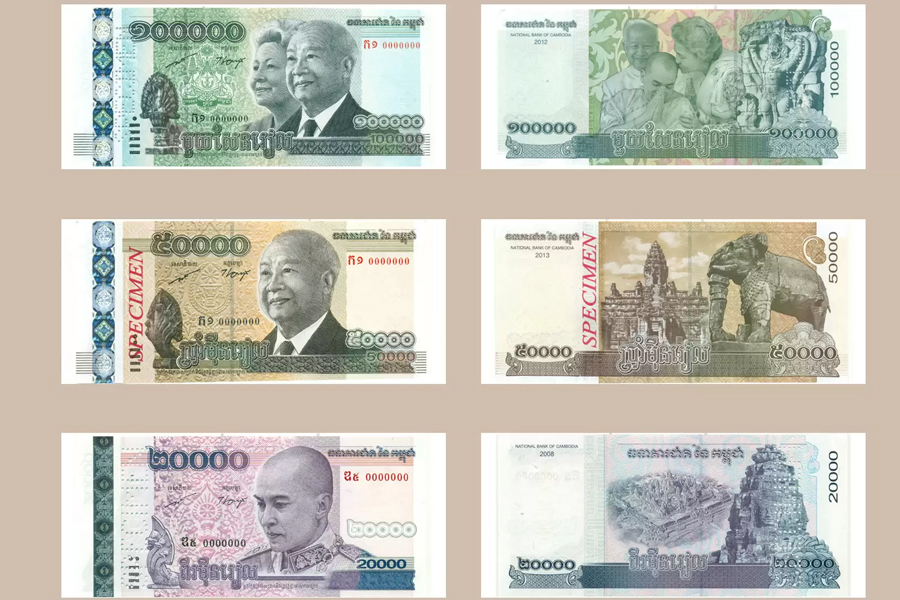
Some denomination notes in Cambodia
Although the Cambodian Riel is the official currency in Cambodia, and retains its common use in the rural provinces, the US Dollar is also widely accepted in Cambodia, particularly in urban and tourist areas.
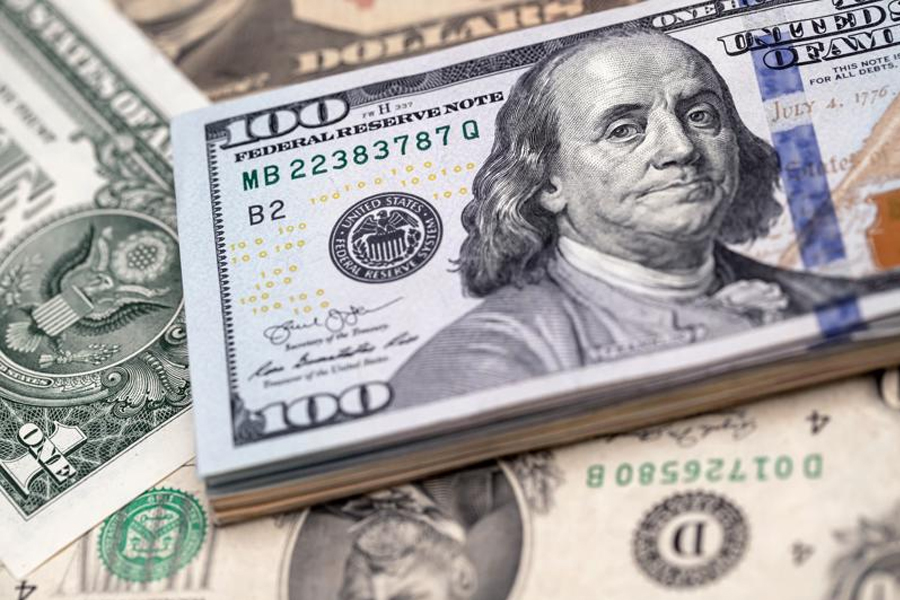
The USD is also a valid currency in Cambodia
Regarding the origin of the term "riel", there are several theories. Many think that the name originates from the Khmer word meaning "small fish." Others assert that the term comes from the high silver Mexican real that traders from Malaysia, China, and India brought to Cambodia in the middle of the 19th century.
At two different points in the history of the nation, there were two unique systems for the Cambodian riel.
On January 1, 1955, Cambodia released its first riel after achieving independence. The Riel was issued at par with the previously existing Piastre, which was completely replaced by September 29, 1955. It was the official currency in Cambodia until 1975, when the Khmer Rouge took over Cambodia, abolished all forms of money, and instituted a barter economy. Following the overthrow of the Khmer Rouge in 1979, the Central Bank was reconstituted, and in 1980 the second riel was adopted as the official currency of Cambodia.
Beginning in the 1980s, Cambodia was becoming more and more dollarized until the United Nations began sending humanitarian relief there in the early 1990s. Furthermore, the sending of remittances home from Khmer refugees led to an annual surge in inflation of up to 177%.
The public's trust in the riel was damaged by that incident, which also promoted dollar use. About 22,000 foreign servicemen were stationed throughout Cambodia between 1991 and 1993 by the United Nations Transitional Authority in Cambodia, one of the biggest UN missions ever. The expenditures of these individuals in US dollars constituted a significant portion of the Cambodian economy at that time.
Travelers visiting a nation like Cambodia, which has a dual currency system, have the option of paying with KHR, USD, or a combination of the two. You might, however, frequently spend more in USD than in local currency, and you should anticipate receiving your change back in Cambodian riel. To obtain the best deal, you should use riels for smaller purchases. Additionally, you should carry a few tiny notes of local money if you travel to a rural area where the residents are unfamiliar with international visitors and do not use US dollars.
Recently, there has been a campaign of de-dollarization which gradually removes little US dollar notes from circulation. By using riel more frequently, Cambodians aim to preserve the pride in their country that has been lost over time. As a result, travelers can discover that tiny US dollar notes ($1, $2, and $5) are rarely accepted in markets or at roadside stands. We recommend exchanging both the Cambodian riel while keeping some US dollars to make use of both currencies.
Digital payment is getting increasingly popular in Cambodia, through the use of banking apps and digital wallets. By downloading the Bakong mobile app on any smartphone, Users can conduct transactions in both riels and dollars by entering the payee's phone number, or scanning a QR code. Whether consumers transfer money from their bank account to their Bakong account or the other way around, there are no transaction costs associated with this payment method. As long as your phone is connected to the internet, you can roam freely across crowded cities and destinations without worrying about making a payment that would otherwise limit your exploration.
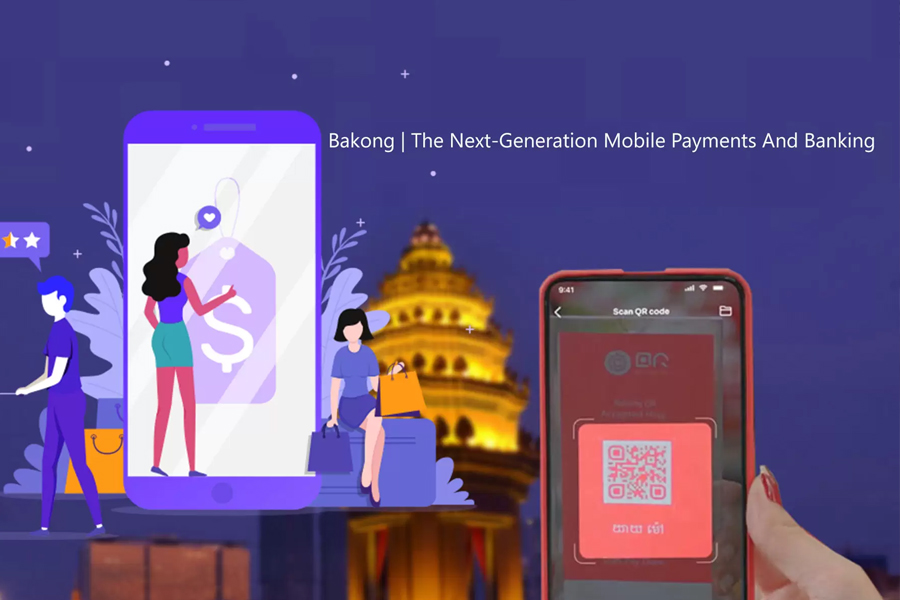
Bakong is a popular digital wallet in Cambodia
Many shops, hotels, restaurants, and shopping malls in cities like Phnom Penh or Siem Reap accept credit cards as payment. Credit cards from American Express, Visa, and MasterCard are frequently accepted for use by foreign visitors. However, since cash is the sole accepted form of payment in certain areas, using a credit card might not be an option if you travel to Cambodia's countryside. Do expect a 2-3% surcharge when you are making a credit card payment here though.
You may like: How much does it cost to travel to Cambodia?
Here are Cambodian currency rates compared to several other currencies as of December 2024:
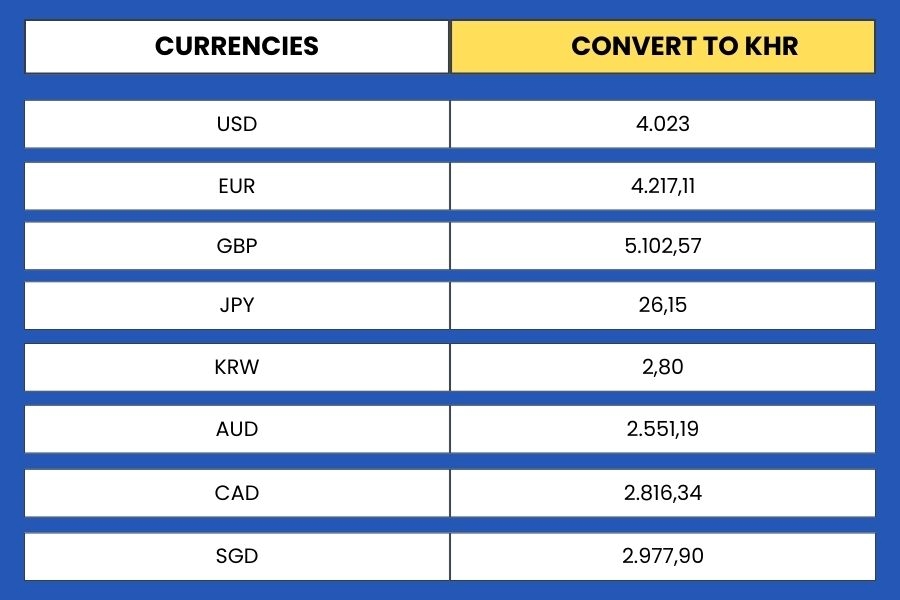
The exchange rate of some currencies to the Cambodian riel
 A currency exchange counter in Cambodia
A currency exchange counter in Cambodia
Some other tips for travelers
This concludes our guide on money and currency in Cambodia. Do not hesitate to get in touch with us if you would like further information. It is a pleasure for Asia King Travel to assist you with any facet of your trip.
You may like: Backpacking Through Cambodia Without Breaking the Bank